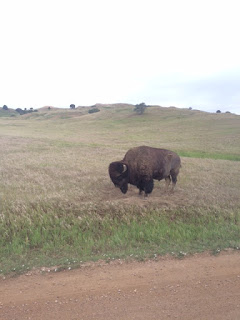A Birding Paradise
Guest post by Clemson Montana Summer Program student Addie Carter
One of the main reasons for me wanting to come to Montana is
the birding opportunity that I have here. I am no expert birder myself, and I
didn’t have a lot of time during or between lectures, but I did manage to get
quite a few life birds under my belt. My first day I was really excited to see
a ferruginous hawk, not because it’s threatened, but because it’s the largest
hawk in North America. Another bird that I was really excited to see were burrowing
owls. These owls typically live in old prairie dog burrows, but like ferruginous
hawks, their numbers are also in decline. Some of the other highlights included
the black-billed magpie, white pelican, upland sandpiper, long-billed curlew,
and the western meadowlark. There are many more birds that I’ve seen while here,
but if I list them all then it would probably take a whole page.
Montana is a birder's paradise, but that paradise is
threatened. Many of these birds have sharply decreased in numbers, and according
to Audubon, prairie birds are declining more than any other bird group in North
America. There are many different factors that are causing this decline, but
they can all be traced back to a human cause.
While out with Dr. McMillan we walked in the cottonwood
forest around the base of Devil’s Tower. Here he explained that around 60% of
all prairie birds rely on these cottonwood forests for habitat. These forests though are declining because the main tree in it, the cottonwood tree, is no
longer able to germinate from new seeds. This is because cottonwoods grow in flood
plains and their seeds will only take root in places that have recently been affected
by flood. Many rivers in the prairie are being dammed up to prevent these
floods, and because of this we are seeing a decrease in this important habitat.
Another habitat that is under threat by humans is the prairie
itself. Grazing by cattle, farming, and the decline of important native grass
grazers have caused the prairie to drastically change. When we were at cattle feed
lots, the majority of the birds that were there were cliff swallows with the occasional
magpie sitting around. This was completely different from the great diversity
of birds that we saw when we went to Badlands National Park. Around 50% of the different
bird species that I have seen were at this location. I personally think this
increase in diversity is because of the increase in native grazers. There were
bison, prairie dogs, and big horned sheep at this part and all of them create a
grassland mosaic. This mosaic is optimal for grassland birds because it
provides them a place to nest and forage all in the same area. Prairie dogs
provide homes for the burrowing owls and they keep the grass low enough for
the owls to easily spot prey. The roaming buffalo are followed behind by a
flock of brown-headed cow birds that eat the bugs the bison turn up by walking.
By understanding these interactions, between the grazers and the birds, it’s
easy to see why a decline in native grazers is causing a decline in the birds.
While I want to be optimistic and say that the decline in
grassland birds might stop with the reintroduction of buffalo in certain places
on the prairie, I don’t think that is what’s going to happen. The places that
the buffalo are being reintroduced are few and far between, and other grazers
like prairie dogs are still considered a nuisance animal and killed. The decline
in native grazing animals isn’t the only thing these birds have to worry about.
As the human population grows many of these birds will lose their habitat in
the next couple of decades due to the continued expansion of human land use
change. Some migratory birds are still being shot and poisoned, and there’s
also a constant increase in the amount that are being hit by cars. So as I start to learn about the factors that
are affecting these birds, I can only say that I am glad I have gotten to see
them before they are gone for good.



